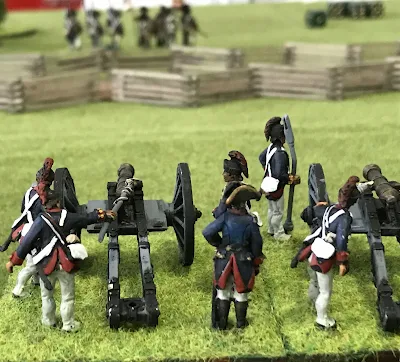One of my favorite regiments from the Rev War. The regiments history is intertwined with that of its commander, Colonel Laomi Baldwin. He was one of those New England men from who did an amazing variety of things in his lifetime; and did them all well.
The 26th Continental Regiment started as Colonel Gerrish's Massachusetts regiment in 1775 during the siege of Boston. Following Gerrish's dismissal from the army on August 19 Baldwin was promoted to Colonel commanding the regiment.
Following the disbanding of the 1775 army, Baldwin was appointed Colonel of the new 26th Continental Regiment in January 1776. The regiment joined Washington's army around New York city in April 1775. They saw fighting at Throgs Neck and Pell's Point New York. After retreating across the Jerseys they fought at the victory at Trenton before their enlistment expired. In 1777 they were consolidated with the 21st Continental Regiment to form the new 9th Massachusetts regiment.
The 26th was unusual in having a Grenadier company. They wore a Seven Years War style cap but with GW instead of GR. A copy of the cap is in the Smithsonian museum. I hope to add Grenadier figures to the regiment in the future.
This is my second edition of this regiment. The first was using RSM LTD. Miniatures. These are from Brigade Games. Why the change? First these new figures are more correct for the 1776 period. Why? They are a mixture of The 1775 Bounty coats (Massachusetts gave to soldiers enlisting), Regimental coats (just being issued but in small numbers in 1776) and civilian clothing. This creates just the right impression I was looking for originally. The old 26th will be repainted to continue its service.
Regimental uniform was a London brown coat with buff or yellow facings. In addition there are some interpretation with a light blue waistcoat or vest. In painting my figures I went with a dark brown coat and buff facings and linings. My waistcoat blue is darker then most pictures I have seen but it looks very nice against the brown so I kept it.
Regimental uniform was a London brown coat with buff or yellow facings. In addition there are some interpretation with a light blue waistcoat or vest. In painting my figures I went with a dark brown coat and buff facings and linings. My waistcoat blue is darker then most pictures I have seen but it looks very nice against the brown so I kept it.
The regimental colors are from The Flag Dude and follow the suggestion of General Charles Lee that each regiment have a Grand Union flag and a regimental color in the regiments facing color with a patriotic motto.





















































